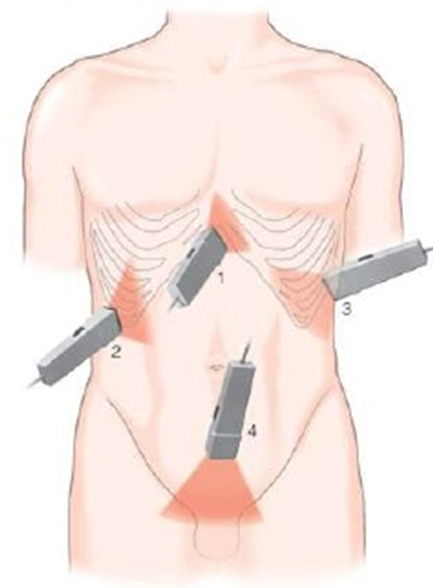- 25% of all trauma victims require “abdominal exploration” -Exploratory laparotomy cause of the problem is found during the procedure, then treatment is often done at the same time
- P/Exam: inadequate to identify intra-abdominal injuries
- Diagnostic modalities- CXR, FAST, DPL, CT & laparoscopy
Blunt trauma: Z
- Hemodynamically stable- FAST , CT scan
- Hemodynamically unstable- FAST
Diagnostic peritoneal lavage (DPL)
- Insert catheter below umbilicus under LA. - if Bloody aspirate- laparotomy.
- 1L NS infusion into peritoneum.
- Returning fluid is bloody- positive lavage.
- Rapid and safe
- Do not determine origin of blood
- Too sensitive
- Does not evaluate retroperitoneal injury
- Replaced by FAST and CT scan
(Image: Diagnostic peritoneal lavage (DPL))

FAST- Focused abdominal sonography in trauma
-
Rapid & accurate.
-
Sensitivity up to 99%.
-
Detects small amount (100 ml) of blood.
-
Four views:
- Pericardiac
- Perihepatic
- Perisplenic
- Pelvic
-
Helpful in management of unstable patients.
(Image: FAST)


Penetrating Abdominal injuries
- Gun shot injuries: urgent surgery
- Stab (knife) injury: * A: Hemodynamically stable- wound exploration, CT scan, Surgery only if intra-abdominal injuries found * B: Hemodynamically unstable- surgery